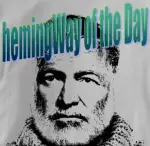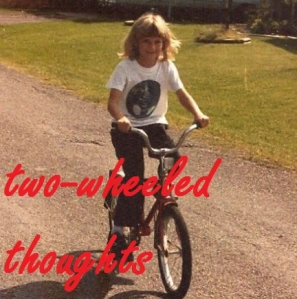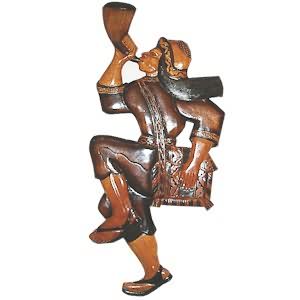Pops joins us again today to write about a book firmly within his area of expertise: running. We’ve all heard something about Born to Run, I believe. I’ve certainly heard good things; but have never been strongly inclined to pick it up. Pops may change my mind, though.
I am writing to make a public apology to myself for not reading this book three years ago; and to make a few personal comments for what they’re worth. It’s not coincidence that I pulled it from the shelf soon after reading Ayers’ The Longest Race; that book reminded me that McDougall’s work might contain some of the same magic, which I had (indeed!) delayed for too long. That instinct was accurate; there are similarities between the two that I really appreciated: inspiring depictions of running, fascinating science & history and a wonderful (though different) voice.
Much has already been written about this book, mostly positive and in great thoroughness. I won’t add much to that effort. Another place to look for insight would be McDougall’s website where you can peruse selected readers’ comments; this book has literally changed lives and inspired people. There are also some wonderful photos, which illustrate that this really is non-fiction, as absurd as that may seem while reading it.
I have mentioned before that I collect books about running, particularly in an often frustrating search for good fiction. This is one of the best running books I have ever read. In spite of its connection to reality, it reflects some of fiction’s best elements: humbly heroic characters who are larger than life; a compelling story that defies reality; a romantic adventurous heart; a witty rollicking storyteller’s voice; and sexy women running hard & kicking ass.
I knew bits & pieces about many of the characters in this story, about the ultra running culture and community, about the barefoot running revolution it stimulated and about the Tarahumara Indians. None of that prepared me for such a fun, informative, exciting and ultimately poignant journey. It is always risky to compare writers or books, but I must say that McDougall’s work reminded me in some ways of both Tom Wolfe and Hunter S. Thompson. I kept stopping to think “I know this is based on fact, but it’s so wild and so much fun I can’t believe it!”
The poignant part of the story actually arrives outside the book, sharply in the realm of real life but in some ways as hard to believe. This probably qualifies as a spoiler so stop right now if you want to read the book first; but for me it is an important part of the tale. It’s almost like McDougall should write the sequel.Here is a relevant quote from the book that sets up the surrealistic “real life” conclusion. The main character in the book, Caballo Blanco, is speaking (he worshiped Geronimo as a kid and retained great respect for the Apache warrior.)
“When I get too old to work, I’ll do what Geronimo would’ve if they’d left him alone… I’ll walk off into the deep canyons and find a quiet place to lie down.”
The author then comments: “There was no melodrama or self-pity in the way Caballo said this, just the understanding that someday, the life he’d chosen would require one last disappearance.”
In March of this year (2012) Caballo was visiting southwest New Mexico so he could run the rugged mountain trails in the Gila Wilderness. One day he planned an easy solo run of 12 miles or so – and he never returned. The Forest Service began a search, and many of his friends (including the author and many characters from the book) arrived from around the country to join the hunt by running the trails. On search day 5, it was a group of Caballo’s running friends who found him off an obscure trail near a stream, dead from heart failure apparently unrelated to any disease or abnormality. He was 58 years old.
(This is also a curious “synchronicity” for blog readers who remember our family fixation with Fire Season, which is set only a few miles away from where Caballo met his end.)
You can read more about this sorrowful ending on the author’s web site, various other online sources, or this NY Times story. The author told his own version of this ending in a piece for Outside Magazine.
Thanks for another solid review, Pops. You make a strong case. Narrative nonfiction (aka “creative nonfiction”) about exciting, culturally diverse, outdoorsy, unbelievable experiences is right up my alley.
Filed under: book reviews | Tagged: nonfiction, Pops, sports | 3 Comments »


















